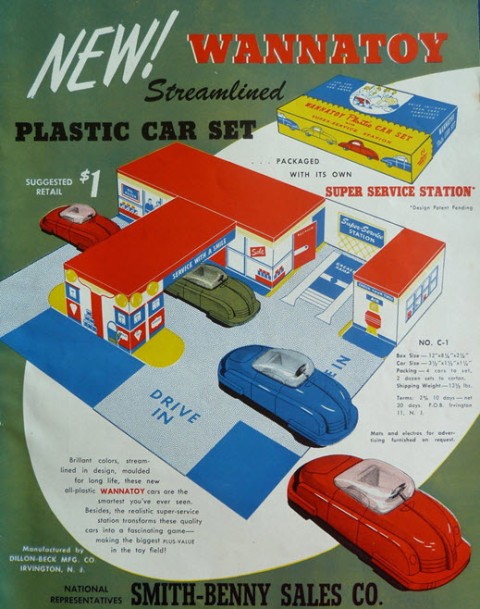
February 2014
Killer Diller
Dillon-Beck Mfg Co
Irvington, NJ
1940 - 1942
There are several lures (past and present) on the market that appear to make the bait look like it has an expression. However, in my opinion, none of them come close to comparing with the expression given by the Killer Diller.
Around 1940, Daniel Dillon left his job at the W. J. Jamison Company, a fishing lure manufacturer, and decided to go into business for himself. He and Edward Rowen formed the Dillon-Beck Mfg Co (where the “Beck” name came from, I am not sure). They began to make a few fishing lures, and at least one was very close to an existing Jamison Company lure. These were made under the trade name of “Sport-A-Lure” with the clever slogan of “Wanna Catch the Limit”.
Now, why the expression on the Killer-Diller, I am not sure. Was it to attract fish, or to attract the fisherman. Whatever the case, the lure manufacturing was short lived at Dillon-Beck as they had other ideals.
In 1941, the situation in Europe grew worse each day because of the war. Dillon and Rowen knew that it was only a matter of time until metal components used in their plastic lures would come under government regulations. Also, if the USA were to get involved in the war, many men who fish would go to war. Therefore, a decision was made to switch production to toys.
Another thing that helped make the decision to switch was that the demand for war related toys was growing at a feverish pace. Kids heard stories of planes and ships in the news every day and requests for these toys was heard by parents all over the USA. And, being Dillon-Beck would make 100% plastic toys, the materials would be classified as nonessential for the war effect and in turn help preserve Young America’s way of life.
Dillon Beck's new toy line was called WANNATOY, a name inspired by their earlier fishing lure slogan. It was decided to start work on a cruiser, freighter, submarine, and airplane, which would be officially introduced at the March 1941 International Toy Fair held in New York City. The new line was a huge hit! And, when the USA entered the war in December of 1941, the company began using all available molding capacity to produce toys and fishing lure production ceased.
A funny story on the toys was that the plastic boats floated, but always seemed to list to one side. Ed Rowen told a buyer who complained that it is because the ship was torpedoed.
After the war, Dillon-Beck still made plastic toys. In fact, they introduced their first post-war toy in 1945 which was a sedan car with a futuristic look. This toy reportedly sold over 1 million in quantity by the first post-war Christmas.
So, the toy business ended the lure business. Is that why this lure is smiling…as it wants to be a toy?
